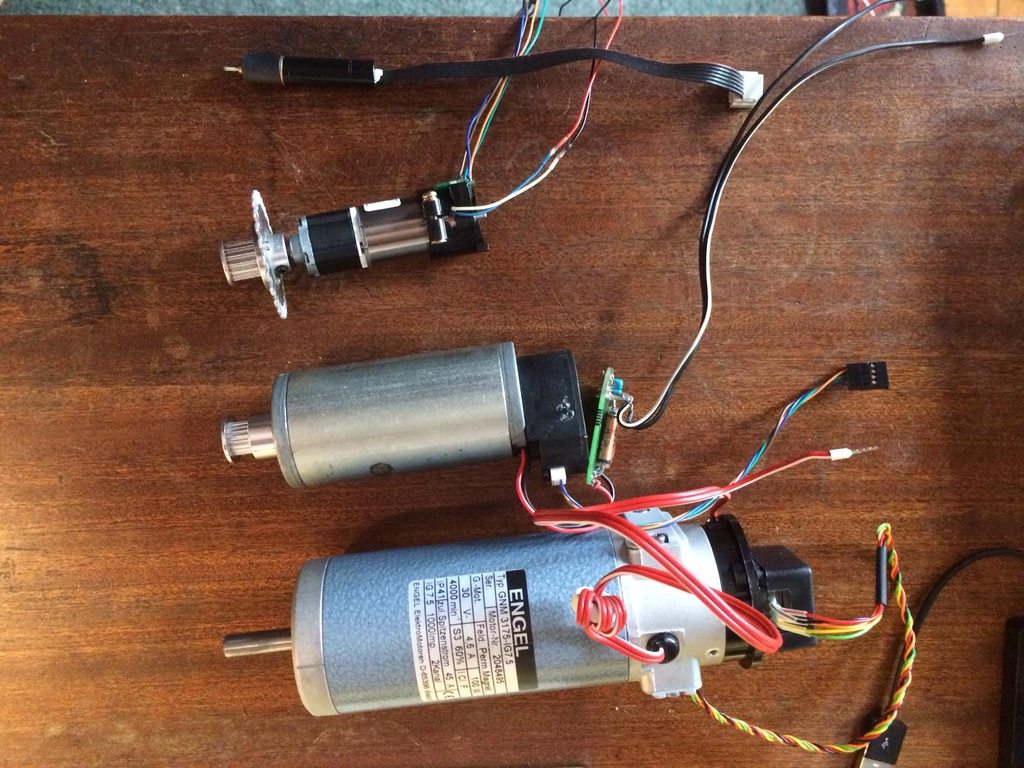I've bought several little DC servos from eBay over the years, some have the motor wires wound once or twice through a ferrite ring, some arrive with nothing on the motor wires, but the encoder wires are wound through a ring, some have neither.
My Teensys seem to cope quite well with running big motors with high-frequency encoders even if I don't put rings on the wires, but what *should* I be doing?
(see the way I squeezed Teensys into a slightly off-topic question )
)
My Teensys seem to cope quite well with running big motors with high-frequency encoders even if I don't put rings on the wires, but what *should* I be doing?
(see the way I squeezed Teensys into a slightly off-topic question


